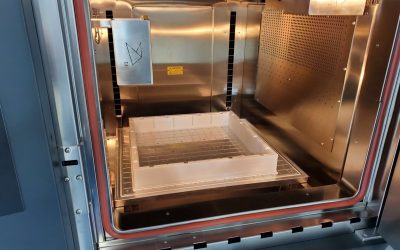For some time, the Fused Deposition Modeling (FDM) 3D printing sector has been attempting to develop a dependable means for printing rubber-like filaments into desired shapes. The effort to establish a method has been hard for several reasons, mainly because very elastic filament materials are susceptible to jamming an extruder.
.
Engineers at the Chinese company Atomstack have created an entirely new system deposition system – the first thermoplastic rubber 3D printer.
.
To fix this and other issues, The key to Atomstack’s Cambrian thermoplastic rubber filament 3D printer is a 2.85 mm direct drive extruder that avoids jamming – the main sticking point in thermoplastic rubber development. With an effective system in place, Atomstack engineers then created unique thermoplastic rubber filament with a substantial elasticity and durability that was effective for correctly and dependably printing almost any end-use rubber-like product. TPR has both rubber and plastic qualities, which makes it very useful for printing bouncy and flexible items. The new thermoplastic rubber technology has a streamlined aluminum alloy structure that keeps control cables out of the way and supplies the rigidity required for precise printing. The Cambrian also has a glass […]
Case Study: How PepsiCo achieved 96% cost savings on tooling with 3D Printing Technology
Above: PepsiCo food, snack, and beverage product line-up/Source: PepsiCo PepsiCo turned to tooling with 3D printing...






























0 Comments